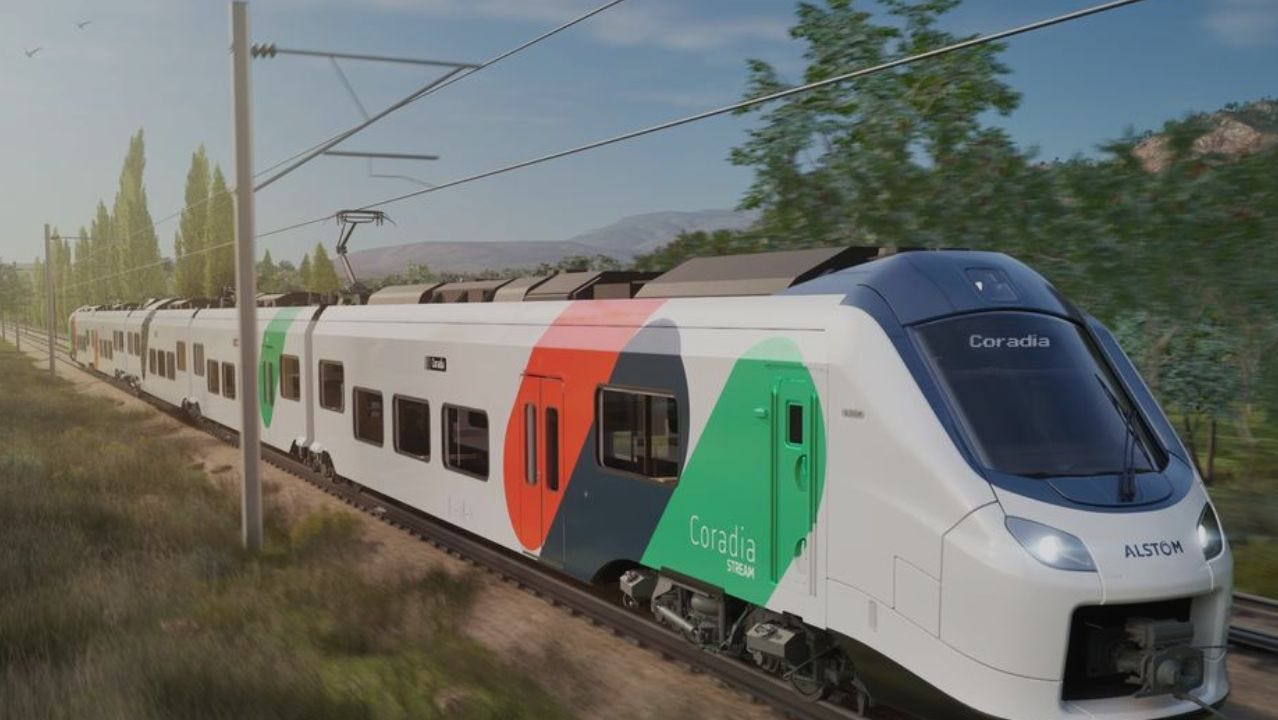Alstom's Polish billion-euro contract: When maintenance beats price
French train manufacturer Alstom has secured PKP Intercity's historic €1.6 billion contract for 42 double-decker trains. The decisive factor was not the train price, but the next 30 years of maintenance costs.
This reflects growing emphasis on lifecycle costing in EU procurement – a principle embedded in EU directives but rarely implemented at this scale.
The price of reliability
After two failed tender rounds where bids exceeded the budget by up to 45%, PKP Intercity chose a new evaluation model. The operator weighted total costs over 30 years rather than upfront prices.
Alstom's bid combined PLN 4.1 billion (Polish zloty) for train delivery with PLN 2.78 billion for maintenance. Stadler's trains were cheaper at PLN 4 billion, but their maintenance offer of PLN 3.3 billion made the total package €94 million more expensive.
The maintenance cost differential reflects fundamental operational advantages. Alstom's nine Polish facilities enable economies of scale through shared parts inventories and integrated logistics. Industry experience shows that such multi-site operations typically reduce maintenance costs by 15–20%.
The existing Pendolino service infrastructure provides another edge. Specialized depot equipment, diagnostic tools, and trained workforce maintaining 20 trains can be leveraged for the new fleet without duplicating fixed costs. Stadler, operating from a single Siedlce facility, would need to build this entire ecosystem from scratch.
Digital maintenance advantage
Alstom's TrainScanner technology – an automated inspection system – uses wayside cameras to inspect passing trains, detecting brake wear and wheel defects. Experience from similar deployments suggests this can eliminate up to 70% of manual inspections.
The HealthHub platform predicts component failures weeks in advance. This enables planned maintenance during scheduled downtimes. Industry studies indicate such systems typically achieve 85–92% accuracy in failure prediction, translating to approximately 30% fewer service disruptions.
Stadler's higher maintenance pricing likely reflects prudent risk assessment. A 30-year commitment without established Polish supply chains or proven winter performance data requires caution. Market analysts generally recommend 20–30% risk premiums for long-term maintenance contracts in new territories.
Their conservative approach couldn't compete with Alstom's ability to price based on actual operational data. A decade of Pendolino operations achieving 99% availability provides statistical confidence that new entrants cannot match without accepting higher risk margins.
Capacity crisis drives technology shift
Poland's passenger numbers must rise to 109 million by 2030 – a 60% increase. Simultaneously, PKP Intercity prepares for post-2030 market liberalization under the 4th Railway Package. Private operators will then target profitable intercity routes.
The double-decker trains with 500+ passenger capacity solve the capacity problem without costly infrastructure expansions. The new Coradia Max EMU trains run at 200 km/h, replacing inefficient locomotive-hauled trains with faster acceleration and shorter turnaround times.
While Pendolino trains are single-deckers optimized for 250 km/h with tilting technology, the new trains prioritize maximum capacity without tilting. This reflects different operational priorities for high-capacity versus high-speed services.
Integration with Poland's €34 billion Central Communication Port (CPK) reinforces the strategic importance. The planned aviation and rail hub – a key node on the TEN-T Baltic-Adriatic corridor – requires efficient connections to major cities within two-hour travel times. High-capacity rolling stock becomes eligible for CEF (Connecting Europe Facility) co-funding.
Market consolidation accelerates
Alstom's victory strengthens its position as Europe's largest train manufacturer. The company holds 39% market share after acquiring Bombardier Transportation in 2021. Its €92 billion order book significantly exceeds competitors'.
The four largest manufacturers control over 70% of the European market. CRRC leads globally, Alstom dominates in Europe, while Stadler excels in regional railways and Siemens focuses on locomotives and high-speed segments.
The real competitive threat comes from Chinese CRRC. State-subsidized prices pressure European manufacturers to consolidate. Alstom's local production – with Polish factories dating to 1864 – provides competitive advantages that pure exporters cannot match.
New procurement paradigm
Modern tenders require 20–30 year maintenance contracts that transfer operational risk to manufacturers. Italy's Trenitalia exemplifies this trend with its €7 billion fleet renewal prioritizing integrated maintenance contracts.
Digital maintenance capabilities have become the key differentiator. Industry experience shows predictive maintenance typically reduces total costs by 20–30% compared to traditional approaches. Advanced systems can reduce spare parts inventory by 25% or more, as components are replaced based on actual condition rather than fixed schedules.
The data advantage from existing operations proves crucial. Each modern train generates 40–60GB of operational data monthly, creating location-specific failure prediction models. This accumulated knowledge – which Alstom has built since 2014 with Pendolino – allows statistical confidence in maintenance pricing.
For a €657 million maintenance contract, industry benchmarks suggest predictive maintenance could yield €130–200 million in potential savings over the contract lifetime. Capturing these efficiencies requires both the technology platform and operational experience to calibrate it correctly.
Partnership over price
Alstom's triumph signals a fundamental shift in European rail procurement. Documented operational reliability and local anchoring now matter more than lowest price.
The 30-year partnership model ensures predictable costs while enabling focus on service quality. As the Commission prepares its post-2027 transport funding framework, Poland's lifecycle approach could become the template for CEF3 rolling stock investments.
Modern economies run on rails requiring world-class rolling stock supported by lasting partnerships.


